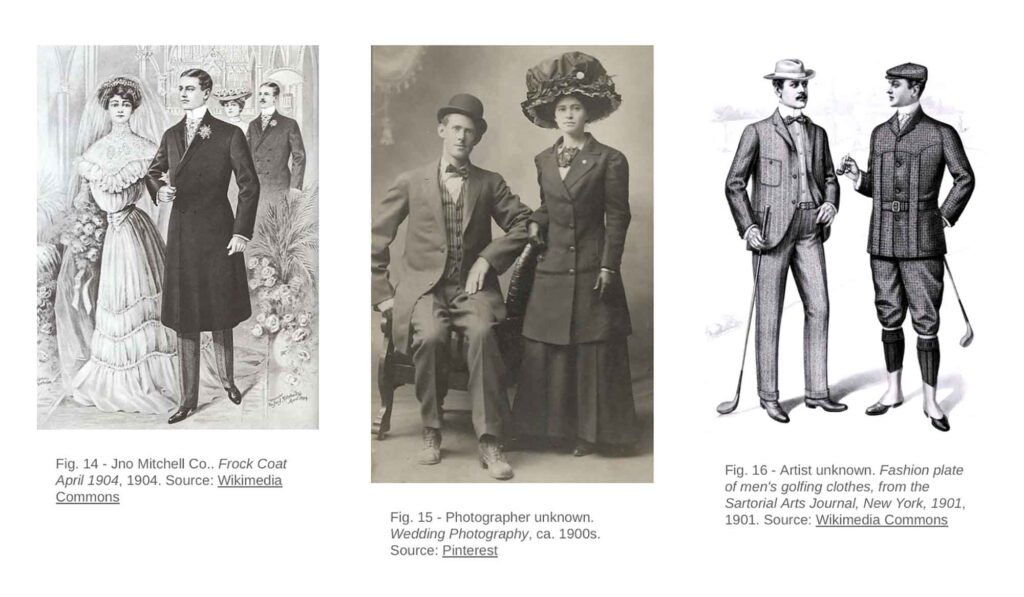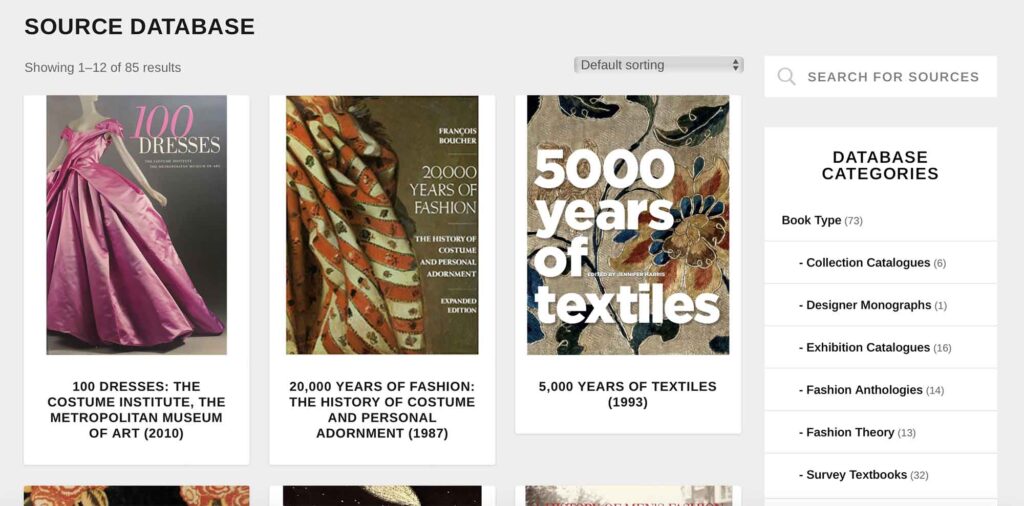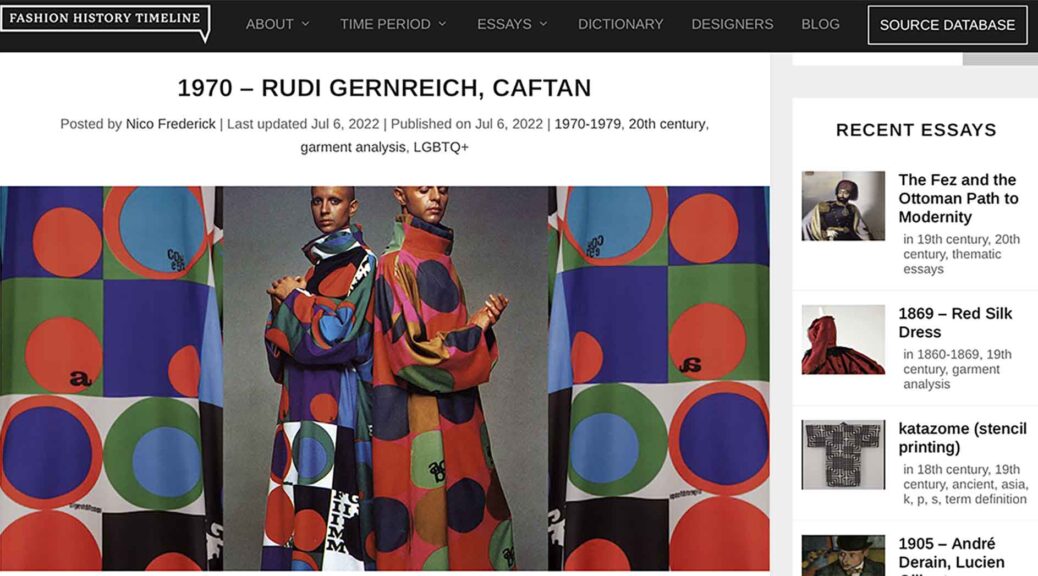Read, hot & digitized: Librarians and the digital scholarship they love — In this series, librarians from the UT Libraries Arts, Humanities and Global Studies Engagement Team briefly present, explore and critique existing examples of digital scholarship. Our hope is that these monthly reviews will inspire critical reflection of, and future creative contributions to, the growing fields of digital scholarship.
The Fashion History Timeline is an online, open access resource that seamlessly marries dress history with modern technology, offering users an interactive and engaging way to explore the world of art and fashion. Its roots started in art history, when Fashion Institute of Technology (FIT) faculty and students developed a pilot project in 2015, aiming to make fashion history accessible to everyone, regardless of background or prior knowledge. This innovative platform boasts an array of features that redefine how we learn about and appreciate costume throughout the ages.

For example, if I were curious about western garments in the early 1900’s, I would simply click on the appropriate time period, which is available in the main drop down menu. The page features an overview of styles worn and when scrolling further, displays recommendations for primary or secondary sources to further my research. The site also offers articles dedicated to both historical dress in BIPOC and LGBTQ+ cultures. Contributors to Fashion History Timeline range from academic professionals and experts within the fashion and art history fields around the world.

One of Fashion History Timeline’s standout features is its reliance on and promotion of published writings. For example, the source database, a curated annotated bibliography wherein users can dive into citations for a vast bibliographic list of textbooks, catalogs, and monographs that span across time and cultures. I found this to be helpful for digital research, with these particular sources being used as foundational pieces in building the database. The visual approach with information transforms the learning experience, allowing users to gain a deeper understanding of the context and significance attributed to each source. In addition, the website also has a Zotero database, where students and researchers can draw information as well as contribute to the wealth of bibliographic information. The sources are organized in a similar manner as the Fashion History Timeline website, emphasizing cohesion as a goal across the indexing.
As a former apparel design student, I would have loved to explore the Fashion History Timeline in my time as an undergrad. I highly recommend researchers, sewists, and anyone who is interested in costuming to utilize it. Comprehensive images and information for fashion history are not always easy to come by and this database fulfills a longtime need for accessible, reliable information about dress.
Want to learn more about fashion history? Check out these resources from the UT Libraries:
Cumming, V., Cunnington, C. W., & Cunnington, P. E. (2000). The dictionary of fashion history (2nd Ed.). Bloomsbury Academic.
Mahawatte, R., & Willson, J. (Eds.). (2023). Dangerous bodies: New global perspectives on fashion and transgression. Springer International Publishing.
Sposito, S. (2021). Fashion – the ultimate history of costume: From prehistory to the present (2nd Ed.). (K. Krell, Trans.). Promopress.
Want to get started on using Zotero? Check out this LibGuide about citation managers.

